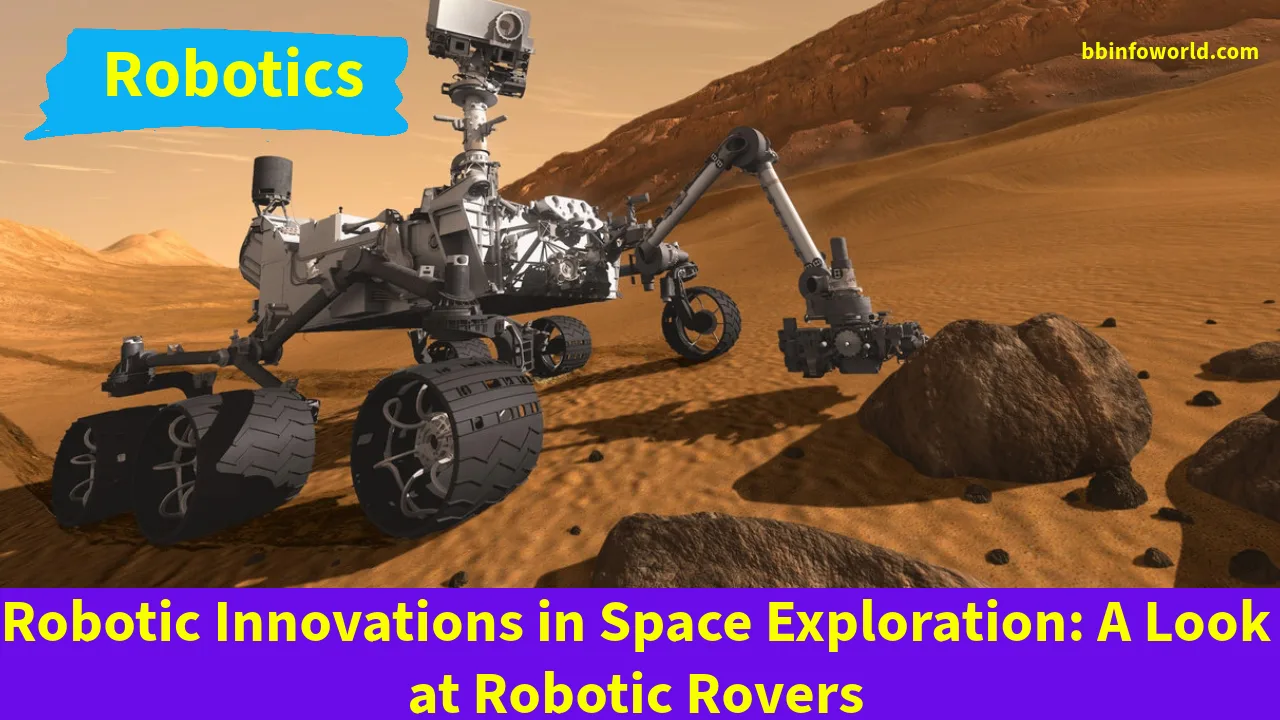
Robotic Innovations in Space Exploration: A Look at Robotic Rovers
Robotic rovers represent a remarkable technological achievement in the field of space exploration. These unmanned vehicles have become instrumental in our quest to understand distant planets, moons, and celestial bodies in our solar system. With their ability to traverse challenging terrains, capture images, analyze samples, and transmit data back to Earth, robotic rovers have transformed our understanding of outer space. In this article, we will delve into the significance, capabilities, and achievements of robotic rovers in space exploration.
1. Introduction to Robotic Rovers:
Robotic rovers are autonomous or remotely operated vehicles designed to navigate the surfaces of other planets, moons, and celestial bodies. They are equipped with a range of scientific instruments, cameras, spectrometers, and sensors to gather data and images, which are transmitted back to Earth for analysis.
2. Historical Context:
The concept of robotic rovers for space exploration gained prominence with the successful missions of the Mars rovers, including Spirit, Opportunity, and Curiosity. These rovers demonstrated the feasibility of remote exploration and paved the way for future missions.
3. Purpose and Objectives:
Robotic rovers are deployed to explore uncharted territories and answer fundamental questions about the geology, atmosphere, and potential habitability of other planets. They provide insights into the history of the solar system and offer clues about the possibility of life beyond Earth.
4. Technological Features:
Modern robotic rovers are equipped with state-of-the-art technologies, such as:
- High-resolution cameras: Capture detailed images of the terrain.
- Spectrometers: Analyze the composition of rocks and soil.
- Drilling mechanisms: Extract samples from the surface.
- Mobility systems: Navigate challenging landscapes.
- Communication equipment: Transmit data to Earth.
5. Achievements and Discoveries:
a. Mars Exploration:
- Spirit and Opportunity: These rovers discovered evidence of past water activity on Mars, suggesting the planet was once more hospitable.
- Curiosity: Curiosity rover found that Mars could have supported microbial life in the past, based on its findings of habitable conditions.
b. Lunar Exploration:
- China’s Yutu-1 and Yutu-2: Explored the Moon’s surface and analyzed lunar regolith samples.
c. Future Missions:
- Perseverance Rover: Sent by NASA, this rover aims to explore Mars’ Jezero Crater, searching for signs of past microbial life and collecting samples for potential return to Earth.
6. Challenges and Considerations:
Robotic rovers face several challenges, including:
- Communication delays: Due to the vast distances, real-time communication with rovers can be limited.
- Harsh environments: Extreme temperatures and unpredictable terrain can pose risks to the rovers’ functionality.
- Limited power: Rovers rely on solar panels or other power sources, which can affect their operations during dust storms or low-light conditions.
7. Future Prospects:
Robotic rovers are likely to continue playing a pivotal role in space exploration:
- Europa Clipper: NASA’s mission to explore Jupiter’s moon Europa includes a lander concept with a robotic rover to study the icy moon’s subsurface ocean.
- Artemis Program: NASA’s plan to return humans to the Moon involves robotic rovers to aid in scouting and resource identification.
8. Conclusion:
Robotic rovers have revolutionized our understanding of the cosmos by providing a close-up view of other planets and celestial bodies. Their technological advancements have opened up new possibilities for future exploration and the search for extraterrestrial life. As we continue to develop and refine these robotic explorers, the knowledge they uncover will undoubtedly shape our perception of the universe and our place within it.



